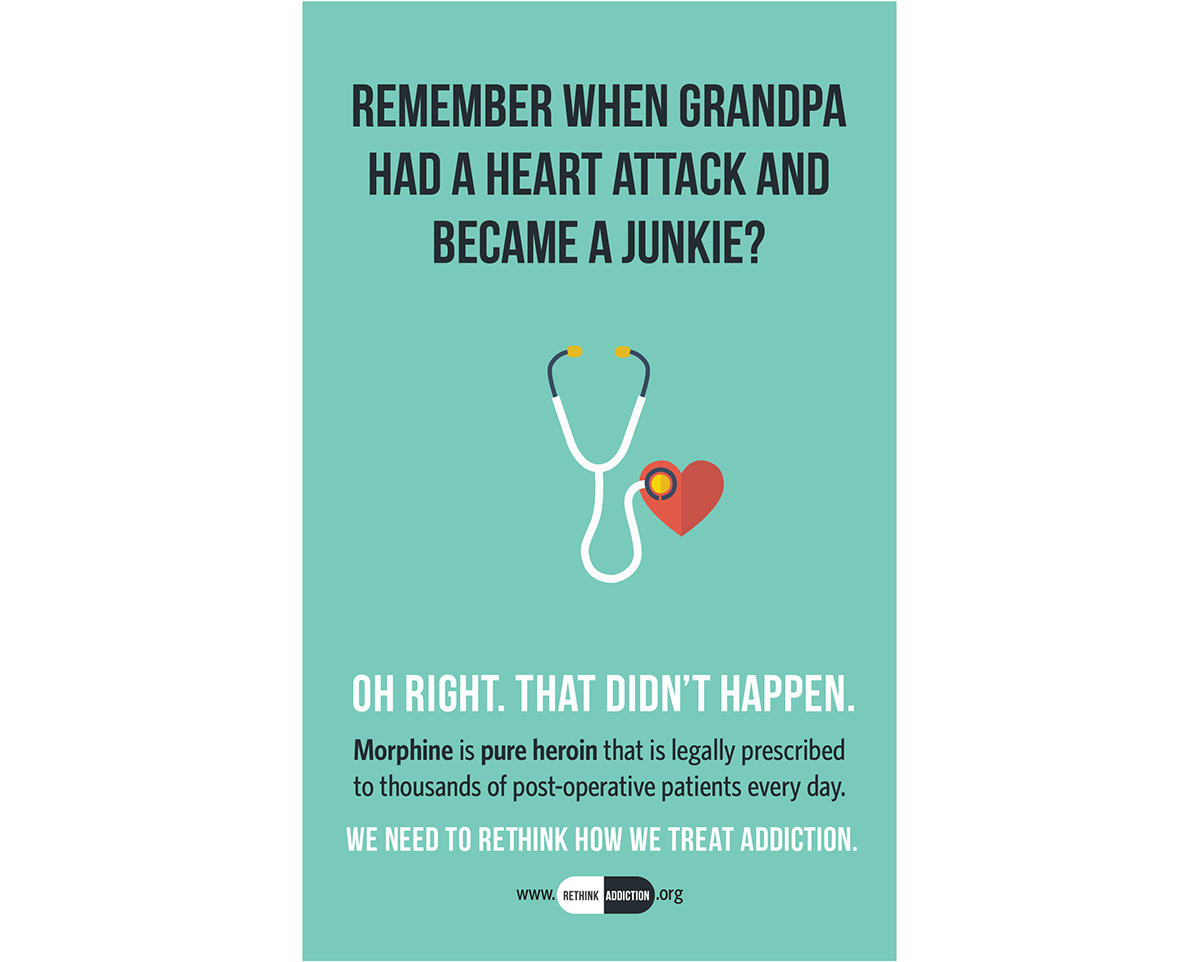Purpose
This set of signage was the third of a three-part series of work that I did surrounding the topic of substance abuse. My goal with this project was to use logic to challenge people's viewpoints on what causes addiction. In each poster, I present a fairly common situation that most people can relate to such as an elderly relative having a heart attack or a mother giving birth. I then reveal to the viewer that in each of these situations, morphine - which is a very pure form of herion - was prescribed to their loved one yet their loved one did not become addicted to the drug. This surprising revelation is intended to get the viewer to question why some people can use drugs and not become addicted, and ultimately to question whether or not we can truly assume that drugs are the sole cause of addiction.
I was strongly influenced by the book Chasing the Scream by Johann Hari. Hari's book explores theories of the causes of addiction while also analyzing the modern-day War on Drugs and it's impacts on society as a whole.

Parameters
The objective of this project was to create a social campaign that would help educate the public about the general topic of addiction by presenting an unconventional viewpoint.
The objective of this project was to create a social campaign that would help educate the public about the general topic of addiction by presenting an unconventional viewpoint.

Process
I began by conceptualizing ways that I could dispel the myth that drugs cause addiction. I thought about different scenarios in which people use drugs and do not become addicted. It's a little-known fact that morphine, which is legally prescribed by physicians to help patients manage pain, is an extremely pure and concentrated form of heroin. I chose to describe scenarios which most people would be able to relate to and demonstrate that people can use drugs and not become addicted, suggesting that there must be another cause for addiction. I then described each situation, provided a simple illustration related to the situation, and challenged the viewer's thought process by revealing that people can use drugs without becoming addicted.








